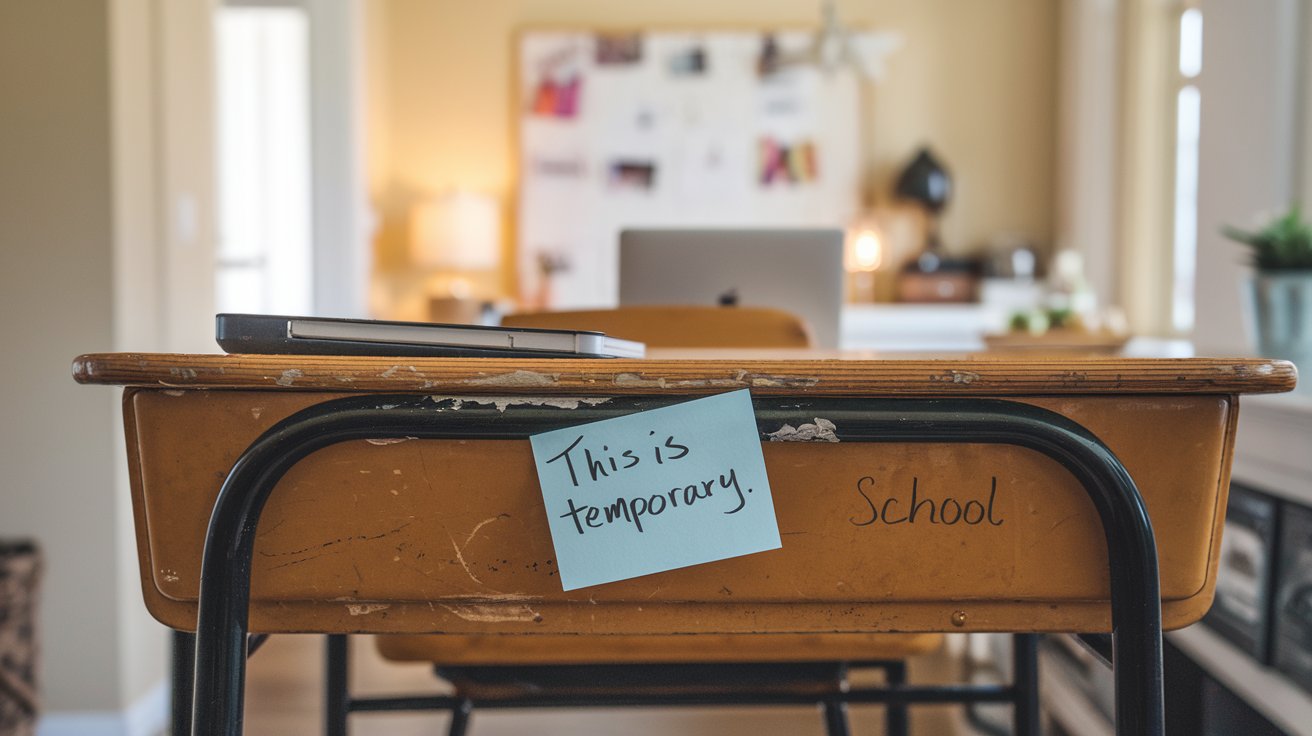Your cart is currently empty!

How to overcome Teacher Burnout: A Personal Story
If your passion for teaching has waned and you’re dragging yourself through the day, you might be facing teacher burnout. This post explores what teacher burnout is and its warning signs. It explores the various signs and symptoms to watch out for, including emotional withdrawal, cynicism, and exhaustion.
What is teacher burnout?
You know that feeling when your alarm goes off, and instead of dreading one rough day, you’re dreading the entire week? That’s teacher burnout creeping in. The exhaustion that no weekend nap or coffee can fix.
I’ve been there, sitting in my car, too drained to step out of the car. If that sounds familiar, you’re not failing; you’re just running on empty.
Teacher workloads are heavier than ever, student behavior is increasingly challenging, and the pressure to meet diverse learning needs while sticking to rigid curriculum standards is relentless. The constant juggling act leaves many teachers emotionally drained, physically exhausted, and mentally overwhelmed.
I know because I’ve lived it. I hit a point where I realized I didn’t just need better boundaries, I needed an exit plan. If you’re feeling the same way, you’re not alone. Let’s talk about how to overcome teacher burnout, whether that means making your job more sustainable or finding a way out altogether.
My Teacher Burnout Story
I have been teaching for over 25 years.
For me burnout struck for the first-time during lockdowns and remote schooling. And I lived in one of the most locked down cities in the world. We taught our classes from home and had to be connected to school all the time. Things could change at a moment’s notice so we needed to be able to receive updates, instructions and requirements, be aware of expectations and to ask questions.
Prior to that I didn’t have much of a problem having work emails and the like on my phone, sending me notifications from staff and students. I was happy to reply to the needs of my students so they could complete their homework and assessments.
But after the lockdowns, when we returned to the classroom setting, the habits of online communication had become the norm. Teachers were communicating on platforms 24 hours a day. I was ‘on’ all the time and gradually my mental load filled up more and more until I couldn’t take it anymore.
On return to onsite teaching, the school executive seemed to want to carry on from where we left off before remote teaching was even heard of. But things were different…

Signs and Symptoms of Teacher Burnout
The signs of teacher burnout are more than just the feeling of stress. There are many physical and emotional indicators that can develop. Here are some ways a teacher can tell if they are heading toward or experiencing teacher burnout:
-
- Feeling overwhelmed, anxious and frustrated
-
- Being more and more cynical, irritable and angry, complaining about everything
-
- Apathetic, emotional detachment or decreased enthusiasm
Teacher burnout can start with feeling emotionally drained and leave you feeling physically exhausted. It’s as if you are caught in a never-ending cycle of stress that drains your motivation and you struggle to find any joy in teaching anymore.
Unfortunately this can also impact your personal life and overall work performance.
Triggers and Contributing Factors
Teacher burnout can emanate from a wide variety of factors such as:
-
- Lack of support from a suitable leadership structure
-
- No say in curriculum decisions – when passionate teachers feel like they have no voice about what they teach and how they teach the content in their subject areas
-
- New policies and mandated training – confusing frequent changes in education policies
-
- Too much emphasis on technology – the pressure to use digital resources for teaching and communication all the time
-
- Large classes with difficult students, safety and violence – this causes emotional distress, anxiety
-
- Large classes of students with diverse learning needs – it is then difficult to attend to the individual learning needs of each student
-
- Excessive workload – lesson plans, preparation, correction, data entry, emails, chats etc all can encroach on personal time and affect ability to switch off from work
-
- Student wellbeing – the pressure on teachers to support student mental health using unfamiliar predetermined resources
Teacher burnout is a complicated issue that is different for every teacher going through it. And contributing triggers can vary greatly.

My Turning Point and Recovery Journey – How to overcome Teacher Burnout.
Thank goodness people of my generation can remember a time before technology that we can compare our lives to now. I have a reference point to which I can compare teaching before and after technology.
The question I keep asking myself is, has technology helped or hurt us to do our jobs as teachers? Has the very thing that was designed to make our lives easier, made it more complicated and busier?
In my case it had led to teacher burnout, and I had to make some changes or sink into the hole of depression feeling like there was no escape. So I took these steps:
-
- I took some time off. I spoke to my doctor (in tears) who told me to take some stress leave. I took 3 days leave, one of which was walking along an empty beach which helped ground me. I knew I had to do more of this.
-
- I set boundaries – see my post here
-
- Practised self-care – see my hacks here
-
- Said no many many times to extra demands and pressures placed on me at the time. Enough was enough if I wanted to survive. I continue to do this today.
-
- Sought help from school executive who were able to give me some flexibility with my responsibilities.
This paved the way for where I am now. By educating myself about teacher burnout, I have been able to recover from it. Through my own research, I now am able to advocate for mental health awareness for other teachers.

Teacher burnout is not going away any time soon. Well it hasn’t for me anyway.
Each and every day it is important for me to apply what I have learned from my past experiences.
And I don’t always get it right. I have good days and bad days. Good weeks and bad weeks.
More and more teachers are experiencing stress and are quitting their teaching careers.
Unless we tackle teacher burnout and the stress teachers face on a daily basis, we will never solve this problem.
If we were to acknowledge the struggles that teachers are experiencing and make teacher wellbeing a priority, that is some encouragement for the future of the teaching profession.
But it will take persistence and dedication from individuals and schools to stand up and implement real change.
Kimberley






